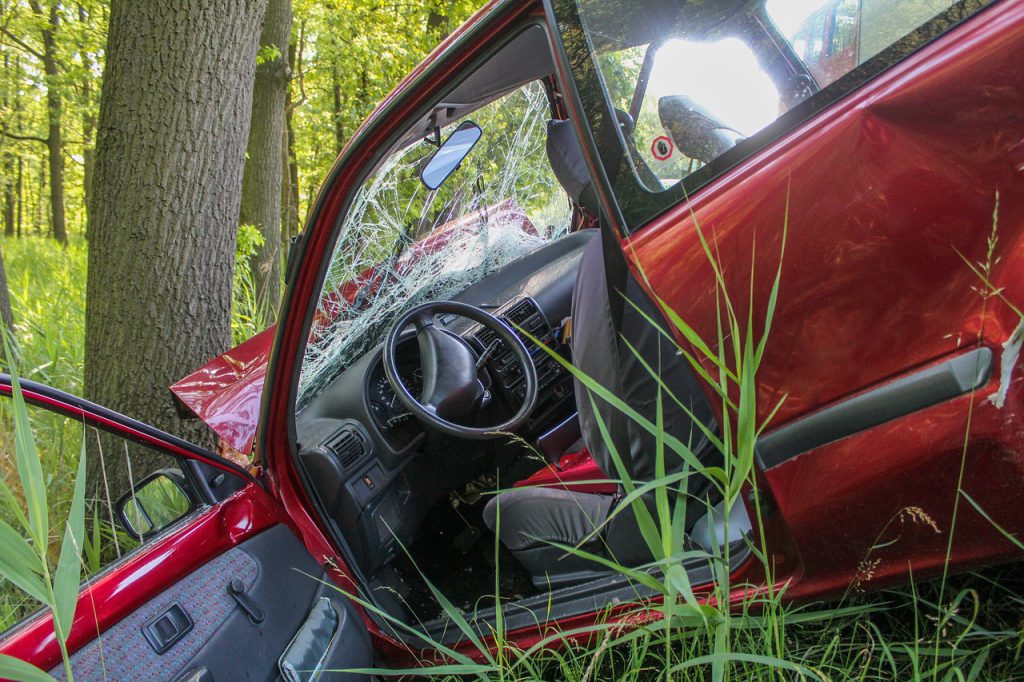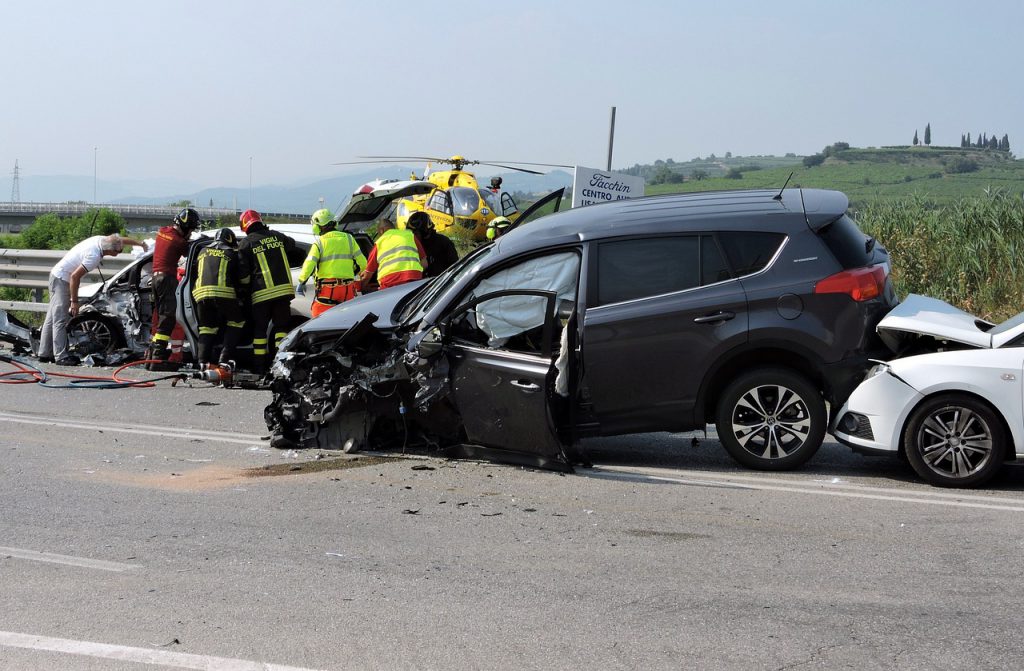Every year, thousands of people are injured or killed in road accidents. While some of these tragedies are unavoidable, many can be prevented by understanding and avoiding the factors that contribute to them. This article will explore some common causes of car crashes and how to reduce your risk on the roads. It’ll take a look at what you should watch out for when behind the wheel so that you can stay safe on the roads. With this knowledge, drivers around the world can take steps toward making our roads safer for everyone.
Contents
Blind Spots
Blind spots are areas on the road where drivers cannot see other vehicles or objects, which can be a major factor in road accidents. The attorneys working at The Patel Firm warn that this is even more increased when it comes to trucks or other large vehicles. Blind spots can be caused by the size and shape of a vehicle, as well as obstructions such as hedges, trees, and buildings. They are particularly dangerous for larger vehicles like trucks, vans, and buses due to their height and length. Drivers must take extra care when driving in areas with blind spots to ensure that they check all sides of the vehicle before changing lanes or making turns.

In addition to physical objects that may create blind spots, certain driving techniques can also increase the risk of an accident. For example, tailgating – when one driver follows too closely behind another – can make it difficult for either driver to see other cars in the surrounding area. A driver who is not paying attention or is texting while driving may fail to notice parked cars or pedestrians near a blind spot until it’s too late to avoid an accident.
It is important for all drivers to be aware of potential blind spots while they are on the road in order to reduce their chance of being involved in an accident. Checking side mirrors frequently and using proper turn signals will help identify when cars are nearby and give other drivers time to react accordingly.
Speeding
Speeding is one of the most common factors that contribute to road accidents, making it a crucial issue for drivers and road safety authorities alike. According to research, an estimated 1.35 million lives are lost every year due to speeding-related crashes. Not only does this put the lives of drivers, passengers, pedestrians, and other road users at risk, but it also has a huge financial impact on society.
When driving at high speeds, drivers have less time to react in risky situations and are more likely to lose control of their vehicles. Additionally, high speeds can lead to higher kinetic energy in collisions; meaning that even minor crashes may cause serious injury or death. This is especially true for motorcyclists who often suffer fatal injuries due to their lack of protection compared to car occupants.
In addition to these physical risks, speeding can cause mental fatigue which impairs judgment and decision-making – both key elements for safe driving practices. In fact, data from NHTSA shows that approximately 25% of all fatal crashes involve some form of driver impairment from drowsiness or distraction. Furthermore, when combined with other risk factors such as alcohol or drug use, speeding can quickly become a deadly combination – causing severe impacts and long-lasting consequences.
Given the severity and prevalence of the problem worldwide, governments are actively taking steps towards reducing speed-related accidents and encouraging safer driving practices through legislation such as speed limits and enforcement initiatives like traffic cameras. Moreover, some countries have introduced campaigns aimed at raising awareness amongst young drivers about the dangers associated with reckless behavior on the roads.
Mechanical Failures
From minor breakdowns that can cause a car to slow down or swerve suddenly, to more serious failures such as brake or steering system malfunctions, mechanical failure plays a major role in roadway accidents. In some cases, they may be caused by faulty parts or components that have been installed incorrectly. Brakes and tires are often cited as leading causes of accidents, especially those involving cars and trucks. In addition, poor maintenance or lack of regular servicing can also be a contributing factor. Here are some tips to avoid this:
- regularly check fluid levels
- keep oil in check
- check tire pressure before rides
- inspect your brakes
- keep the car clean
- follow the manufacturer’s recommended maintenance schedule
- conduct tune-ups
- inspect the battery
- replace windshield wipers
- have the alignment and suspension checked
When it comes to vehicles driven on highways, defective suspension systems can result in sudden uncontrollable movements when the vehicle is subjected to high speeds and/or uneven terrain. Poorly maintained oil levels as well as filters can reduce engine performance resulting in sluggish acceleration and possible stalling of the vehicle in critical situations. Exhaust emissions from vehicles that are not regularly serviced tend to be more polluting which can reduce visibility for other drivers on the road.
Driving Under The Influence
Driving under the influence (DUI) is a major factor that contributes to road accidents and fatalities. It’s the act of operating a motor vehicle while impaired by alcohol or other drugs, including prescription medications. Impaired driving leads to slower reaction times, and decreased coordination, vision, and judgment. This increases the risk of dangerous driving maneuvers such as sudden lane changes, running stop signs or red lights, tailgating, and aggressive driving.
According to research, dozens of people get hurt every day due to alcohol-related motor vehicle crashes. In addition to physical damage caused by drinking and driving, there are significant economic costs associated with it as well.
To prevent drivers from operating their vehicles under the influence, states have implemented laws that may impose a criminal penalty on offenders – typically ranging from license suspension or revocation to jail time or probation – as well as administrative punishments such as fines or fines with community service requirements. Despite these laws, however, many drivers choose to ignore them; according to CDC data, 1 million drivers were arrested in 2018 for DUI offenses nationwide.
It is important that everyone takes responsibility for their behavior while behind the wheel – no life should be lost due to an avoidable mistake like drinking and driving. Each person can help reduce the number of fatalities by taking certain actions.
Reckless Driving
Reckless driving involves a variety of different behaviors, including speeding, running red lights and stop signs, making illegal U-turns, weaving in and out of traffic, failing to yield the right of way, tailgating other vehicles, and driving while under the influence of alcohol or drugs. All of these behaviors can have deadly consequences, as they increase the risk of car crashes and driver fatalities.
Speeding is one of the most common types of reckless driving and is also one of the deadliest. Excessive speed can significantly reduce the amount of time a driver has to react to potential hazards on the road.
As mentioned, driving while impaired is another major factor that contributes to road accidents caused by reckless driving. Operating a vehicle with any amount of alcohol or drugs in your system impairs judgment and reaction times – making it difficult for motorists to properly assess their surroundings on the roadways.
Overall, reckless driving is an incredibly dangerous trait that can contribute significantly to fatal car crashes on our roads today. It is important for all motorists to practice safe habits behind the wheel at all times in order to prevent serious collisions from occurring due to irresponsible behavior on our roads.
Poor Road Conditions
Road conditions are a significant contributor to road accidents. Poor visibility, deteriorated infrastructure, and hazardous weather can all be factors that lead to dangerous driving conditions and tragic outcomes.
Visibility is a major factor contributing to poor road safety. Poor lighting on highways or roads with sharp curves can limit visibility, making it difficult for drivers to see approaching vehicles or other roadside hazards. Furthermore, debris on the road and overgrown vegetation can obstruct a driver’s view of upcoming obstacles or traffic signs. This can increase the risk of an accident occurring due to the lack of proper insight into the current environment.
The condition of roads is another key factor of poor road conditions that contribute to accidents. Potholes, eroded asphalt, crumbling concrete curbs, and broken guardrails are some examples of how deteriorating infrastructure can cause hazardous driving conditions. When these situations arise, drivers must take extra caution when traversing these areas as there may be unexpected surprises hidden in plain sight. Additionally, inadequate signage such as missing yield signs or faded lane markers can add confusion to the roadway and lead to collisions between vehicles traveling at high speeds.
In conclusion, poor road conditions are a major factor in contributing to road accidents as they often create unsafe environments for motorists even when taking additional precautionary measures. It is crucial that governments prioritize infrastructure improvements as well as enact legislation for better enforcement of driver safety regulations in order to reduce fatalities due to car crashes caused by poor driving conditions
Weather
While some weather conditions, such as a light drizzle, may not have an outright detrimental impact on driving safety, other weather conditions can be hazardous and can lead to fatal car crashes. Common risks associated with driving include low visibility due to fog or heavy rain, slippery roads due to snow or ice, and powerful winds that can blow cars off the road. All of these weather-related hazards increase the chance of accidents, especially during harsh winter storms or intense thunderstorms.
Low visibility due to dense fog is one of the most dangerous types of weather for drivers. Poor visibility makes it difficult for drivers to make out signs and other cars on the road, increasing their risk of colliding with another vehicle or running off the road altogether. Similarly, heavy rain also reduces visibility while also making the roadway significantly more slippery than normal. Slick roads cause vehicles to become harder to control and more prone to skidding—two factors that are known contributors to automobile crashes.
Finally, high winds can also cause serious problems for drivers both in terms of safety and control over their vehicles. Stormy winds often make it difficult for drivers to maintain a steady speed or direct their car in a specific direction, as gusts of wind may force them into another lane or send them careening off course entirely.
Distracted Driving
Distracted driving has become a major factor in contributing to road accidents, endangering the lives of drivers, passengers, and pedestrians. It is when an individual drives while engaging in other activities that take their attention away from the primary task of driving. These are the following:
- using your phone
- adjusting the radio
- eating and drinking
- applying makeup
- talking to passengers
- looking at maps or directions
- external distractions
- daydreaming
All these activities divert your attention away from the act of driving through visual, auditory, and cognitive distractions. In fact, studies have found that attempting to multitask while operating a motor vehicle impairs your reaction time even more than if you were intoxicated with alcohol.
The consequences of distracted driving can be severe – drivers are far more likely to get into an accident due to the decreased alertness resulting from their divided attention between multiple tasks. Distracted drivers often fail to notice hazards in time to react properly and safely maneuver around them. This can lead to hitting another car or pedestrian on the road, causing serious injury and even death.
Fatigue
Research has found that people who are fatigued are more likely to have slower reaction times and be less aware of their surroundings. This can lead to an inability to spot hazards on the road, resulting in an increased risk of an accident. Additionally, fatigue can cause impaired judgment and lead to more rash decisions made while driving.
Studies have shown that being awake for 18 hours or more causes similar levels of impairment as having a blood alcohol content (BAC) level of 0.05%. As this amount of time without sleep is equivalent to driving with a BAC above the legal limit, it is clear that fatigue is a dangerous factor when behind the wheel. People who drive after long periods of time awake may find themselves weaving out of their lane, not heeding traffic signs or signals, or taking risks they normally wouldn’t.

It is clear that a variety of factors can contribute to road accidents, from poor weather conditions and distracted driving to fatigue. To ensure safe operation on the roads, it is important for drivers to be aware of these risks and take measures to minimize them. Drivers should avoid distractions such as using their phones or eating while behind the wheel, stay alert by taking breaks every two hours if possible, and pay attention to any signs of tiredness in order to drive safely. By following these safety tips, everyone can help reduce the risk of car crashes and keep our roads safer for all users.



